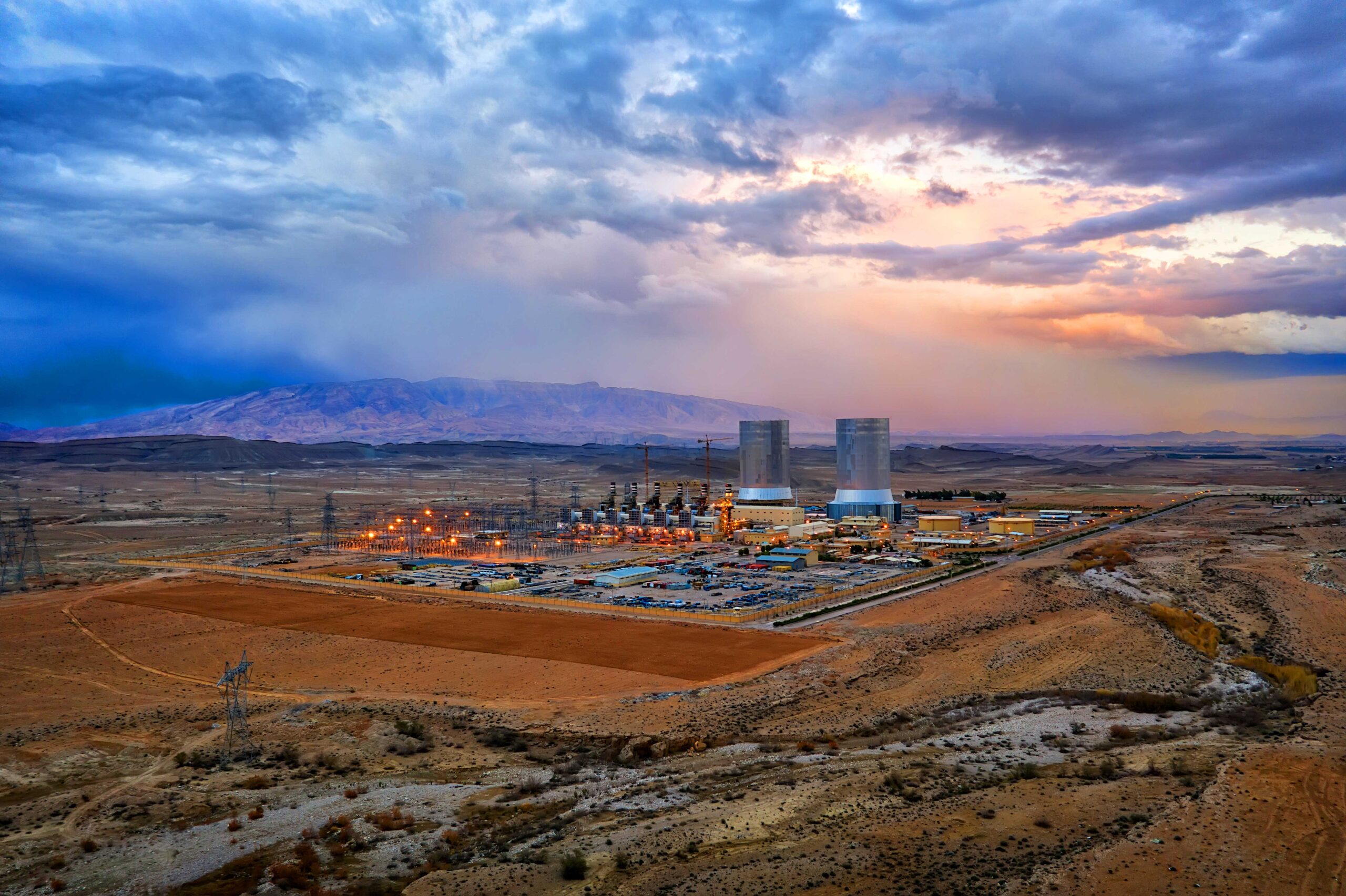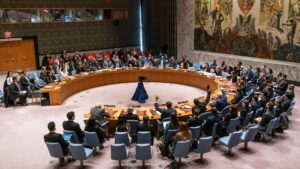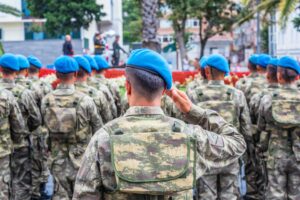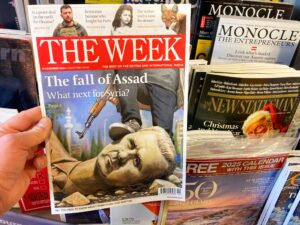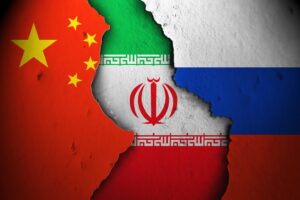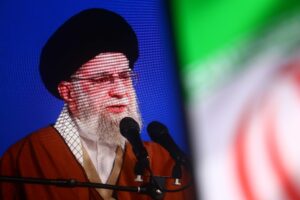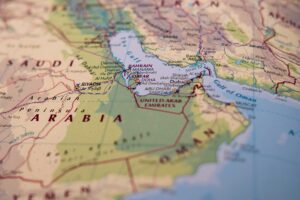The return to negotiations in Vienna in April 2021 was anticipated with optimism by the signatories to the nuclear deal[i], officially the Joint Comprehensive Plan of Action (JCPOA), as well as the United States, who withdrew[ii] from the deal in May 2018 under President Donald Trump’s tenure and reimposed economic sanctions on Iran[iii]. In the wake of the US withdrawal and increasing pressure on its economy, Iran had engaged in a series of escalatory measures, including suspending[iv] adherence to the limits of uranium enrichment prescribed by the JCPOA and restricting[v] the access of the International Atomic Energy Agency (IAEA)—the UN’s nuclear inspector tasked with monitoring Iran’s nuclear-related activities detailed in the JCPOA—to its nuclear sites. After eight rounds of indirect negotiations between Iran and the United States, mediated by the European Union, the United Kingdom, France and Germany (E3/EU+3), and attended by Russia and China, the EU submitted[vi] a final text for Iran’s review in August 2022, aimed at reviving the JCPOA in a form of full compliance.
Significant points of disagreement[vii] remained in place between the parties, which included Iranian demands for the cessation of ongoing IAEA investigations[1], the removal of the Iranian Revolutionary Guard Corps (IRGC) from the US Foreign Terrorist Organization list, and longtime US commitment to the removal of sanctions placed on Iran. US counteroffers with regard to the IRGC, the only point the Biden administration did have the authority to address, were wholly rejected by Iran. These offers envisioned the eventual broadening of the JCPOA by curbing Iran’s missile program and regional proxy activities too. Iran’s destabilizing activities besides its nuclear program have indeed served as a basis of vocal criticism of the JCPOA since before its signing, articulated by several of the US’ partners in the Middle East, including various Arab states and Israel[viii]. Iran’s missile program and proxy warfare developed unabated after the signing of the JCPOA in 2015, and these initiatives have gained further speed since tensions with the US began to increase in 2018[ix].
Russia’s war in Ukraine and its consequent animosity with the US and its European partners filtered into the JCPOA negotiations as early as March 2022.
Russia’s war in Ukraine and its consequent animosity with the US and its European partners filtered into the JCPOA negotiations as early as March 2022[x]. As EU countries were preparing for record-high energy prices due to gas shortages as a result of their joint sanctions regime against Russian energy imports[xi], Iranian officials understandably believed they commanded significant leverage. This undermined the prospects for reconciliation even further. In addition to this, Iran’s partnership with Russia in support of the latter’s offensive in Ukraine by means of providing drones and missiles has inextricably linked the question of non-nuclear weapons development to the state of nuclear talks with Iran[xii].
The past two months brought about an apparent revival of diplomatic initiatives for the first time since negotiations solidified last August. On 31st May, Director General of the International Atomic Energy Agency Rafael Grossi expressed cautious optimism[xiii] with regard to the progress the IAEA has made in talks with Iran about its nuclear program. The IAEA allegedly closed two investigations in Iran in May related to undeclared[xiv] nuclear activities at the Abadeh site and the enrichment[xv] of uranium to 83.7% purity at the Fordow plant. This follows Oman’s Sultan Haitham bin Tariq’s visit[xvi] to Iran between 28th and 29th May, and Iranian Foreign Minister Hossein Amir-Abdollahian’s trip[xvii] to Oman in April—the nuclear issue featured prominently during both official visits. White House Coordinator for the Middle East and North Africa Brett McGurk also visited Oman in a low-profile trip at the beginning of May[xviii], inviting the assessment that indirect talks have continued to progress in the background.
Mechanisms Under the Current Deal: Sunset, Snapback, and Red Line
The fact that the snapback mechanism has not been activated up until this point despite clear violations of the terms of the JCPOA is, in large part, due to the desire of the US and the E3 to avoid irreversibly escalating tensions.
The recent—although low-profile—upsurge in initiatives aiming to revive talks can be explained by the imminent expiry of a set of UN restrictions on Iran on 18th October 2023 introduced in UN Security Council Resolution (UNSCR) 2231[xix], adopted in endorsement of the JCPOA. After these ‘sunset’ clauses are due, UN restrictions[xx] on Iran’s development of ballistic missiles capable of delivering nuclear weapons alongside a ban to import and export missile-related technology, including drones, will expire.
The Dispute Resolution Mechanism, colloquially referred to as ‘snapback’, appears in articles 36 and 37 of the JCPOA as well as in articles 10 to 15 of UNSCR 2231[xxi], and is aimed at restoring UN sanctions[xxii] on Iran in place before the signing of the JCPOA at the request of any member of the deal should Iran violate the terms of the agreement. In December 2022, the EU3 released a joint statement[xxiii] following a discussion in the UN Security Council, reaffirming their commitment to activate the snapback clause if Iran did not return to compliance with the terms of the JCPOA. Specifically, uranium enrichment above 60% was defined as a red line. Importantly, the snapback mechanism cannot be vetoed by any member of the Security Council, which provides a unique avenue to the US and its European partners to restore UN sanctions without the approval of Russia.
Of course, Iran has technically crossed the abovementioned red line by enriching uranium to 84% purity, which the IAEA discovered in February this year[xxiv]. The fact that the report did not lead to an escalation into international conflict was due to the combined efforts of the Iranian regime and the IAEA to prove[xxv] that the insignificant quantity of 84% enriched uranium particles detected was an accidental by-product of uranium enrichment up to 60%. Considering Iran’s long track record of limiting IAEA access to its nuclear sites, however, the incident can also be interpreted as a message sent by the regime to its adversaries that it does have the technical capabilities and the know-how to acquire weapons-grade uranium. This evidences the dangerous strategy of posturing between Iran and the West defined by recurring periods of escalation and de-escalation, which has—so far—stopped short of all-out war.
Notwithstanding the absence of weapons-grade uranium stockpiles, the IAEA reported[xxvi] that Iran’s enriched uranium reserves are 18 times larger than the limit specified in the JCPOA. The IAEA estimated that Iran possesses 434.7 kg of uranium reserves enriched to 20% in the form of uranium hexafluoride, 87.5 kg of uranium enriched to 60% as well as an additional 37.7 kg produced in other forms.
The fact that the snapback mechanism has not been activated up until this point despite clear violations of the terms of the JCPOA is, in large part, due to the desire of the US and the E3 to avoid irreversibly escalating tensions. Enforcing the option of snapback and placing further pressure on an already strained Iranian economy would likely lead to a critical situation, considering that Iran’s nuclear breakout time has been reduced[xxvii] to mere weeks from the original 12 months the Obama administration envisioned in 2015[xxviii].
On the other hand, the strategy of waiting and aiming to limit uranium enrichment in Iran to 60% risks the expiry of crucial UN sanctions in the immediate future as well as other provisions of UNSCR 2231 as a whole by January 2026[xxix], after which Iran’s nuclear program would be completely free of restrictions. In light of the new cold war waged between Russia and the United States in the lands of Ukraine, a new negotiation process and UN Security Council resolution would be unlikely to pass Russia’s veto.
Which New Deal?
The idea for a different framework is catching on.
In their analysis, Ali Vaez and Vali Nasr[xxx] narrowed down the US and its Western partners’ priorities to the extension of restrictions and the expansion of the Iran agreement to missile-related and regional geopolitical issues. US Secretary of State Antony Blinken spoke[xxxi] about a broader JCPOA deal that would also address Iran’s regional policies of destabilisation and its ballistic missile program. On the other hand, in a recent speech[xxxii] at the Washington Institute, US National Security Advisor Jake Sullivan spoke about the US’ need to pursue diplomatic avenues that will lead to a long-term solution with regard to Iran’s nuclear program, indicating that a new plan might also be on the table. Even if conditions in the international arena were conducive for Tehran to take on a more conciliatory stance, the negotiation process would likely be complicated and long.
Notwithstanding, the idea for a different framework is catching on. In a statement from May[xxxiii], the G7 no longer referenced the JCPOA as the only possible way to solve the Iran nuclear issue. “We reiterate our clear determination that Iran must never develop a nuclear weapon. We remain deeply concerned about Iran’s unabated escalation of its nuclear program, which has no credible civilian justification and brings it dangerously close to actual weapon-related activities. A diplomatic solution remains the best way to resolve this issue. In that context, the Joint Comprehensive Plan of Action continues to provide a useful reference.”
The International Crisis Group argued that while reviving the JCPOA would be impossible at this point[xxxiv], a “narrow pathway to a deal still exists”. The best way forward may be for the sides to consider single-measure commitments, while respecting red lines to avert an escalation of conflict in the nuclear and regional geopolitical arenas alike. A quid-pro-quo approach could buy the negotiating parties time to envision and prepare a more durable accord. Examples of such step-by-step measures would be the dilution of Iran’s existing uranium stockpiles enriched to 60% and/or the restoration the IAEA’s enhanced access to Iranian nuclear sites in return for the partial unfreezing of Iran’s assets abroad or the lifting of restrictions on Iran’s oil exports.
Iran’s Interests
An interim agreement that could provide banking exchanges and the sale of Iranian oil would likely be a similarly more limited but nonetheless acceptable approach to Tehran.
According to the recent agreement[xxxv] between Iran and the IAEA, Iran has agreed to turn on 10 of the 27 cameras related to the JCPOA in its nuclear facilities. The beginning of the process of re-installing the monitoring equipment of the IAEA at various sites in Iran can be evaluated as Iran’s desire for the management of tensions with the Agency in preparation for some form of return to a nuclear deal, which could help alleviate the country’s dire economic crisis[xxxvi] by means of removing sanctions.
In a recent interview, Mohamad Marandi, advisor to the Iranian negotiating team at the nuclear talks stated[xxxvii] that Iran would still welcome the revival of the JCPOA and that last year’s text submitted by the EU would be an acceptable framework. Naturally, a reinstated JCPOA along with the expiry of UN sanctions would doubly benefit Iran. However, the draft prepared by EU High Representative Joseph Borrell narrowed the scope of lifting sanctions in comparison to the original nuclear deal from 2015. An interim agreement that could provide banking exchanges and the sale of Iranian oil would likely be a similarly more limited but nonetheless acceptable approach to Tehran.
What Next?
Any new agreement would likely come at a significant cost for the West.
The US and its partners appear to have three options—a plan for new negotiations, deterrence, or military action—but the room for manoeuvre is in fact limited. While the US continues to prioritize diplomacy in order to contain the situation, it also puts forward deterrence as an option to prevent Iran from developing and using a nuclear weapon. Jake Sullivan forewarned[xxxviii] that if Iran comes close to obtaining a bomb, the US will recognize Israel’s freedom of action to eliminate the threat. These statements are in line with Israel’s own declared stance[xxxix] for reserving its right to attack Iran’s nuclear facilities in a high-threat scenario, however, unilateral Israeli action remains unlikely without the US’ knowledge and, indeed, support. The US and Israel monitor the Iran file closely and jointly[xl]. In the runup to the US presidential elections in 2024, however, the Biden administration will use all its power to avoid a conflict scenario in the Middle East while Israel will not attack unless it has the full backing of its military partner. This factor substantially undermines the two countries’ deterrence value, which, in turn, also has an impact on Western leverage in negotiations.
Any new agreement would likely come at a significant cost for the West. Iran is aware of the pressure of time on the US and the E3 and will certainly use its leverage. To achieve a breakthrough in negotiations, the West might not only have to grant Iran significant concessions with regard to the lifting of sanctions but will also have to accept the continuation of Iran’s ballistic missile program and regional destabilizing activities. In fact, such activities are likely to continue in earnest. Narrowing the window of threat remains the most important priority for the coming months.
[1] Based on more recently published documents, in 2019, the IAEA investigated four safeguard cases in Iran, including tests conducted for uranium metal production in the Jaber Ibn Hayan laboratory and the discovery of uranium on three undeclared nuclear sites in Marivan, Turquzabad and Varamin.
[i] The New York Times. (2021). U.S. and Iran Agree to Indirect Talks on Returning to Nuclear Deal. Retrieved from https://www.nytimes.com/2021/04/02/world/europe/us-iran-nuclear-deal.html
[ii] The White House. (2018). President Donald J. Trump is Ending United States Participation in an Unacceptable Iran Deal. Retrieved from https://trumpwhitehouse.archives.gov/briefings-statements/president-donald-j-trump-ending-united-states-participation-unacceptable-iran-deal/
[iii] The New York Times. (2018). Trump’s Sanctions Disrupt Iran’s Shipments of Humanitarian Aid. Retrieved from https://www.nytimes.com/2018/08/06/us/politics/iran-sanctions-trump.html
[iv] International Institute for Strategic Studies (IISS). (2020, May). Pompeo, M. (2020, May 21). Remarks on the JCPoA, The Heritage Foundation, Washington, DC, 21 May 2020. Retrieved from https://www.iiss.org/online-analysis/survival-online/2020/05/jcpoa-withdrawal-pompeo-statement
[v] BBC News. (2019). Iran nuclear deal: Tehran to develop centrifuges for uranium enrichment. Retrieved from https://www.bbc.co.uk/news/world-middle-east-50329647
[vi] EURACTIV. (2021). EU submits a final text at Iran nuclear talks. Retrieved from https://www.euractiv.com/section/global-europe/news/eu-submits-a-final-text-at-iran-nuclear-talks/
[vii] International Crisis Group. (2021). Restoring the Iran Nuclear Deal: Still Much to Discuss. Retrieved from https://www.crisisgroup.org/b87-middle-east-north-africa/gulf-and-arabian-peninsula/iran/restoring-iran-nuclear-deal-still
[viii] Reuters. (2018). Iran nuclear deal withdrawal: Global reaction. Retrieved from https://www.reuters.com/article/us-iran-nuclear-gulf-reaction-idUSKBN1I93CU
[ix] Foundation for Defense of Democracies (FDD). (2023, February 15). Arsenal: Assessing the Islamic Republic of Iran’s Ballistic Missile Program. Retrieved from https://www.fdd.org/analysis/2023/02/15/arsenal-assessing-the-islamic-republic-of-irans-ballistic-missile-program/
[x] Radio Free Europe/Radio Liberty (RFE/RL). (2023). Russia Demands Invasion Of Iran If Nuclear Deal Collapses. Retrieved from https://www.rferl.org/a/russia-iran-nuclear-deal-demands-invasion/31746877.html
[xi] The Economist. (2022). Europe scrambles to protect citizens from sky-high energy prices. Retrieved from https://www.economist.com/europe/2022/09/08/europe-scrambles-to-protect-citizens-from-sky-high-energy-prices
[xii] Reuters. (2022). Exclusive: Iran agrees to ship missiles, more drones to Russia, defying West – sources. Retrieved from https://www.reuters.com/world/exclusive-iran-agrees-ship-missiles-more-drones-russia-defying-west-sources-2022-10-18/
[xiii] The Iran Project. (2023, May 31). Grossi confirms progress between Iran, IAEA. Retrieved from https://theiranproject.com/blog/2023/05/31/grossi-confirms-progress-between-iran-iaea/
[xiv] The Iran Project. (2023, May 30). IAEA drops claims over one undeclared site in Iran amid bilateral cooperation. Retrieved from https://theiranproject.com/blog/2023/05/30/iaea-drops-claims-over-one-undeclared-site-in-iran-amid-bilat-coop/
[xv] Iran International. (2023, May 30). IAEA and Iran Agree to Extend Monitoring Deal for One Month. Retrieved from https://www.iranintl.com/en/202305307467
[xvi] The New Arab. (2023, June 4). زيارة السلطان هيثم إلى طهران: أجندة اقتصادية ضخمة ومشاريع مشتركة [Translation: Sultan Haitham’s visit to Tehran: Extensive economic agenda and joint projects]. Retrieved from https://www.alaraby.co.uk/economy/%D8%B2%D9%8A%D8%A7%D8%B1%D8%A9-%D8%A7%D9%84%D8%B3%D9%84%D8%B7%D8%A7%D9%86-%D9%87%D9%8A%D8%AB%D9%85-%D8%A5%D9%84%D9%89-%D8%B7%D9%87%D8%B1%D8%A7%D9%86-%D8%A3%D8%AC%D9%86%D8%AF%D8%A9-%D8%A7%D9%82%D8%AA%D8%B5%D8%A7%D8%AF%D9%8A%D8%A9-%D8%B6%D8%AE%D9%85%D8%A9-%D9%88%D9%85%D8%B4%D8%A7%D8%B1%D9%8A%D8%B9-%D9%85%D8%B4%D8%AA%D8%B1%D9%83%D8%A9
[xvii] Fars News Agency. (2023, June 15). امیرعبدالله هیان در مسقط ایدهها درباره مذاکرات رفع تحریمها را دریافت کرد [Translation: Amir Abdollahian in Muscat receives ideas on lifting sanctions negotiations]. Retrieved from https://www.farsnews.ir/news/14020206000777/%D8%A7%D9%85%DB%8C%D8%B1%D8%B9%D8%A8%D8%AF%D8%A7%D9%84%D9%84%D9%87%DB%8C%D8%A7%D9%86-%D8%AF%D8%B1-%D9%85%D8%B3%D9%82%D8%B7-%D8%A7%DB%8C%D8%AF%D9%87%E2%80%8C%D9%87%D8%A7-%D8%AF%D8%B1%D8%A8%D8%A7%D8%B1%D9%87-%D9%85%D8%B0%D8%A7%DA%A9%D8%B1%D8%A7%D8%AA-%D8%B1%D9%81%D8%B9-%D8%AA%D8%AD%D8%B1%DB%8C%D9%85%E2%80%8C%D9%87%D8%A7-%D8%B1%D8%A7-%D8%AF%D8%B1%DB%8C%D8%A7%D9%81%D8%AA
[xviii] Axios. (2023). Exclusive: Oman facilitates secret U.S.-Iran talks on nuclear program. Retrieved from https://www.axios.com/2023/05/30/iran-nuclear-program-oman-outreach-deal-mcgurk
[xix] United Nations Security Council. (2015). Background. Retrieved from https://www.un.org/securitycouncil/content/2231/background
[xx] United States Institute of Peace (USIP). (2023). Explainer: Timing is Key in Sunsets of Nuclear Deal. Retrieved from https://iranprimer.usip.org/blog/2023/jan/11/explainer-timing-key-sunsets-nuclear-deal
[xxi] United Nations. (2015). Joint Comprehensive Plan of Action (JCPOA). Retrieved from https://documents-dds-ny.un.org/doc/UNDOC/GEN/N15/225/27/PDF/N1522527.pdf?OpenElement
[xxii] Atlantic Council. (2018). A Brief History of Sanctions on Iran. Retrieved from https://www.atlanticcouncil.org/blogs/new-atlanticist/a-brief-history-of-sanctions-on-iran
[xxiii] Government of the United Kingdom. (2022). E3 statement after UN Security Council meeting on Iran. Retrieved from https://www.gov.uk/government/speeches/e3-statement-after-un-security-council-meeting-on-iran-19-december-2022
[xxiv] Reuters. (2023). Iran tells U.N. nuclear watchdog it has begun producing enriched uranium metal. Retrieved from https://www.reuters.com/article/iran-nuclear-iaea-idAFKBN2UT0DP
[xxv] France 24. (2023). Iran directly acknowledges accusation it enriched uranium to 84%. Retrieved from https://www.france24.com/en/middle-east/20230224-iran-directly-acknowledges-accusation-it-enriched-uranium-to-84
[xxvi] International Atomic Energy Agency (IAEA). (2023). Implementation of the NPT Safeguards Agreement and relevant provisions of Security Council resolutions in the Islamic Republic of Iran. Retrieved from https://www.iaea.org/sites/default/files/23/06/gov2023-24.pdf
[xxvii] Government of the United Kingdom. (2023). Iran’s continued nuclear escalation is a threat to international peace and security: UK statement at the Security Council. Retrieved from https://www.gov.uk/government/speeches/irans-continued-nuclear-escalation-is-a-threat-to-international-peace-and-security-uk-statement-at-the-security-council
[xxviii] The White House. (2016). Iran Deal. Retrieved from https://obamawhitehouse.archives.gov/issues/foreign-policy/iran-deal
[xxix] United States Institute of Peace (USIP). (2023). Explainer: Timing is Key in Sunsets of Nuclear Deal. Retrieved from https://iranprimer.usip.org/blog/2023/jan/11/explainer-timing-key-sunsets-nuclear-deal
[xxx] Foreign Affairs. (2023). The Path to a New Iran Nuclear Deal: Security, the JCPOA, and Washington. Retrieved from https://www.foreignaffairs.com/iran/path-new-iran-nuclear-deal-security-jcpoa-washington
[xxxi] CNBC. (2021). US wants to extend and strengthen Iran nuclear deal, Blinken says. Retrieved from https://www.cnbc.com/2021/02/22/us-wants-to-extend-and-strengthen-iran-nuclear-deal-blinken-says.html
[xxxii] The Washington Institute. (2023). Keynote Address by National Security Advisor Jake Sullivan. Retrieved from https://www.washingtoninstitute.org/policy-analysis/keynote-address-national-security-advisor-jake-sullivan
[xxxiii] Council of the European Union. (2023). G7 2023 Hiroshima Leaders’ Communiqué. Retrieved from https://www.consilium.europa.eu/media/64497/g7-2023-hiroshima-leaders-communiqu%C3%A9.pdf
[xxxiv] International Crisis Group. (2022). Restoring the Iran Nuclear Deal: Still a Long Road Ahead. Retrieved from https://www.crisisgroup.org/b87-middle-east-north-africa/gulf-and-arabian-peninsula/iran/restoring-iran-nuclear-deal-still
[xxxv] Mehr News Agency. (2023) Two alleged cases raised by IAEA closed: source. Retrieved from https://en.mehrnews.com/news/201375/Two-alleged-cases-raised-by-IAEA-closed-source
[xxxvi] Financial Times. (n.d.). Iran nuclear deal: The road to revival. Retrieved from https://www.ft.com/content/c86fccb4-f56e-43b7-a596-29c036cb4ec1
[xxxvii] Mehr News Agency. (2023). آمریکا اراده سیاسی برای احیای برجام را ندارد، بايدن میترسد. Retrieved from https://www.mehrnews.com/news/5770960/%D8%A2%D9%85%D8%B1%DB%8C%DA%A9%D8%A7-%D8%A7%D8%B1%D8%A7%D8%AF%D9%87-%D8%B3%DB%8C%D8%A7%D8%B3%DB%8C-%D8%A8%D8%B1%D8%A7%DB%8C-%D8%A7%D8%AD%DB%8C%D8%A7%DB%8C-%D8%A8%D8%B1%D8%AC%D8%A7%D9%85-%D8%B1%D8%A7-%D9%86%D8%AF%D8%A7%D8%B1%D8%AF-%D8%A8%D8%A7%DB%8C%D8%AF%D9%86-%D9%85%DB%8C-%D8%AA%D8%B1%D8%B3%D8%AF
[xxxviii] The Washington Institute. (2023). Keynote Address by National Security Advisor Jake Sullivan. Retrieved from https://www.washingtoninstitute.org/policy-analysis/keynote-address-national-security-advisor-jake-sullivan
[xxxix] New York Post. (2023). Netanyahu readies strike on Iran nuclear facilities: report. Retrieved from https://nypost.com/2023/02/23/netanyahu-readies-strike-on-iran-nuclear-facilities-report/
[xl] The Jerusalem Post. (2023). Netanyahu readies strike on Iran nuclear facilities: report. Retrieved from https://www.jpost.com/international/article-733572

